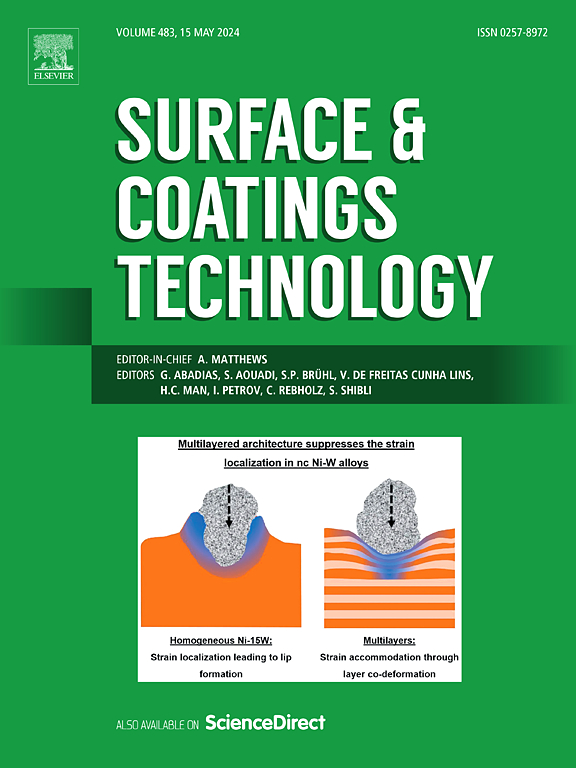Reconstructed oxide scale driving fracture behavior to improve cold spray bonding
IF 5.3
2区 材料科学
Q1 MATERIALS SCIENCE, COATINGS & FILMS
引用次数: 0
Abstract
Cold spraying is a promising technology for biomedical and aerospace applications, yet weak inter-particle bonding remains a critical limitation to coating quality. This study introduces a novel approach to enhance interfacial bonding by reconstructing the oxide scale on titanium alloy powders. The reconstructed oxide scale features a loose and more friable structure that facilitates controlled fracture during particle impact, exposing more fresh metallic surfaces and enabling more metallurgical bonding. AC-STEM and interfacial analyses reveal that this reconstructed oxide scale significantly reduces the barrier effect of surface oxides, promoting stronger inter-particle bonding. Bond strength tests confirm substantial improvements in coating performance, demonstrating the potential of oxide scale reconstruction as an innovative strategy to optimize cold-sprayed coatings. These findings offer valuable insights into surface engineering for enhancing interfacial properties and advancing cold spray technology.
求助全文
约1分钟内获得全文
求助全文
来源期刊

Surface & Coatings Technology
工程技术-材料科学:膜
CiteScore
10.00
自引率
11.10%
发文量
921
审稿时长
19 days
期刊介绍:
Surface and Coatings Technology is an international archival journal publishing scientific papers on significant developments in surface and interface engineering to modify and improve the surface properties of materials for protection in demanding contact conditions or aggressive environments, or for enhanced functional performance. Contributions range from original scientific articles concerned with fundamental and applied aspects of research or direct applications of metallic, inorganic, organic and composite coatings, to invited reviews of current technology in specific areas. Papers submitted to this journal are expected to be in line with the following aspects in processes, and properties/performance:
A. Processes: Physical and chemical vapour deposition techniques, thermal and plasma spraying, surface modification by directed energy techniques such as ion, electron and laser beams, thermo-chemical treatment, wet chemical and electrochemical processes such as plating, sol-gel coating, anodization, plasma electrolytic oxidation, etc., but excluding painting.
B. Properties/performance: friction performance, wear resistance (e.g., abrasion, erosion, fretting, etc), corrosion and oxidation resistance, thermal protection, diffusion resistance, hydrophilicity/hydrophobicity, and properties relevant to smart materials behaviour and enhanced multifunctional performance for environmental, energy and medical applications, but excluding device aspects.
 求助内容:
求助内容: 应助结果提醒方式:
应助结果提醒方式:


